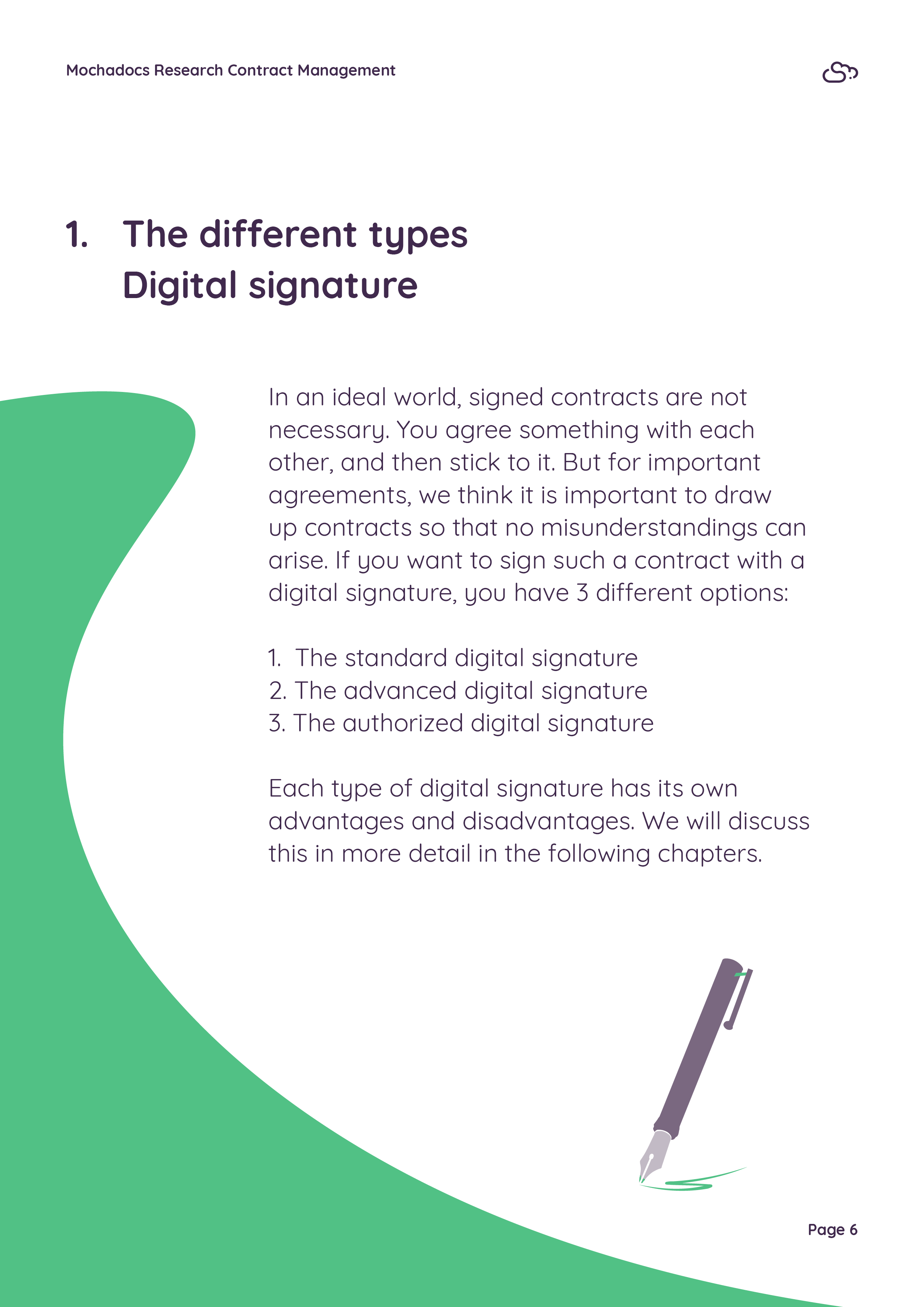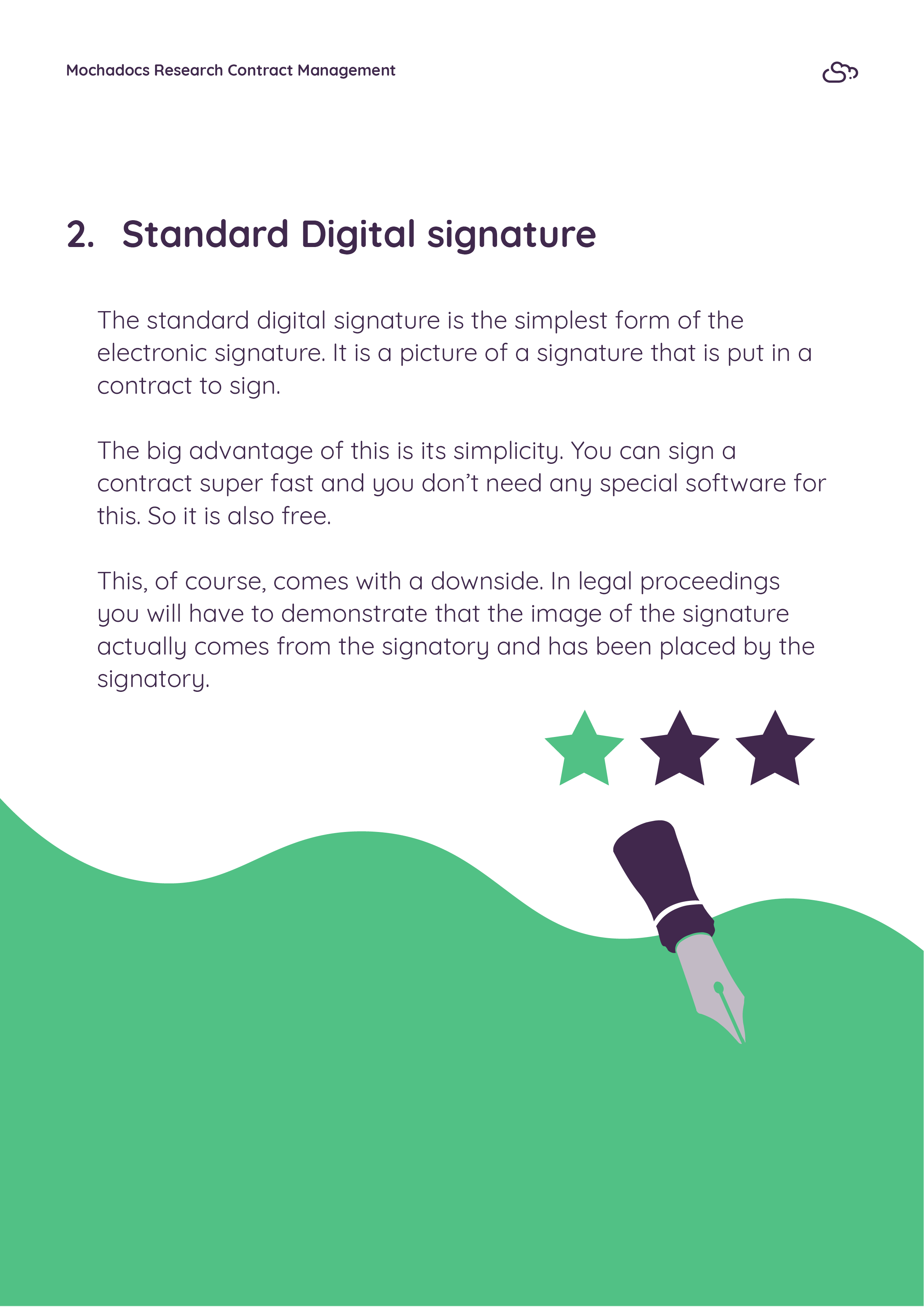Summary
Digitally signing contracts is being used by more and more companies. Yet most companies are not aware that there are different types of digital signatures, and what the advantages and disadvantages are. In this eBook you will learn more about the differences, and when you should use which one.
Conclusion
The type of Digital Signature that is suitable differs per contract. Contracts whose legal validity you must guarantee benefit from an Authorized Digital Signature that is always legally valid.
The 3 types of Digital Signatures


Content eBook
What is this eBook about?

In an ideal world, signed contracts are not necessary. You agree something with each other, and then stick to it. But for important agreements, we think it is important to draw up contracts so that no misunderstandings can arise. If you want to sign such a contract with a digital signature, you have 3 different options:
- The standard digital signature
- The advanced digital signature
- The authorized digital signature
Each type of digital signature has its own advantages and disadvantages. We will discuss this in more detail in the following chapters.
Standard
The standard digital signature is the simplest form of the electronic signature. It is a picture of a signature that is put in a contract to sign.
Advanced
The advanced digital signature is already a step forward based on authenticity. By applying verification and encryption you know who has signed the contract and what has been signed.
Authorized
The authorized digital signature is used in situations where you want the guarantee that the signer is really the signer.


